The economic value of education: Can impact investment in education generate both a social and financial return?
#thesis #economics #investment
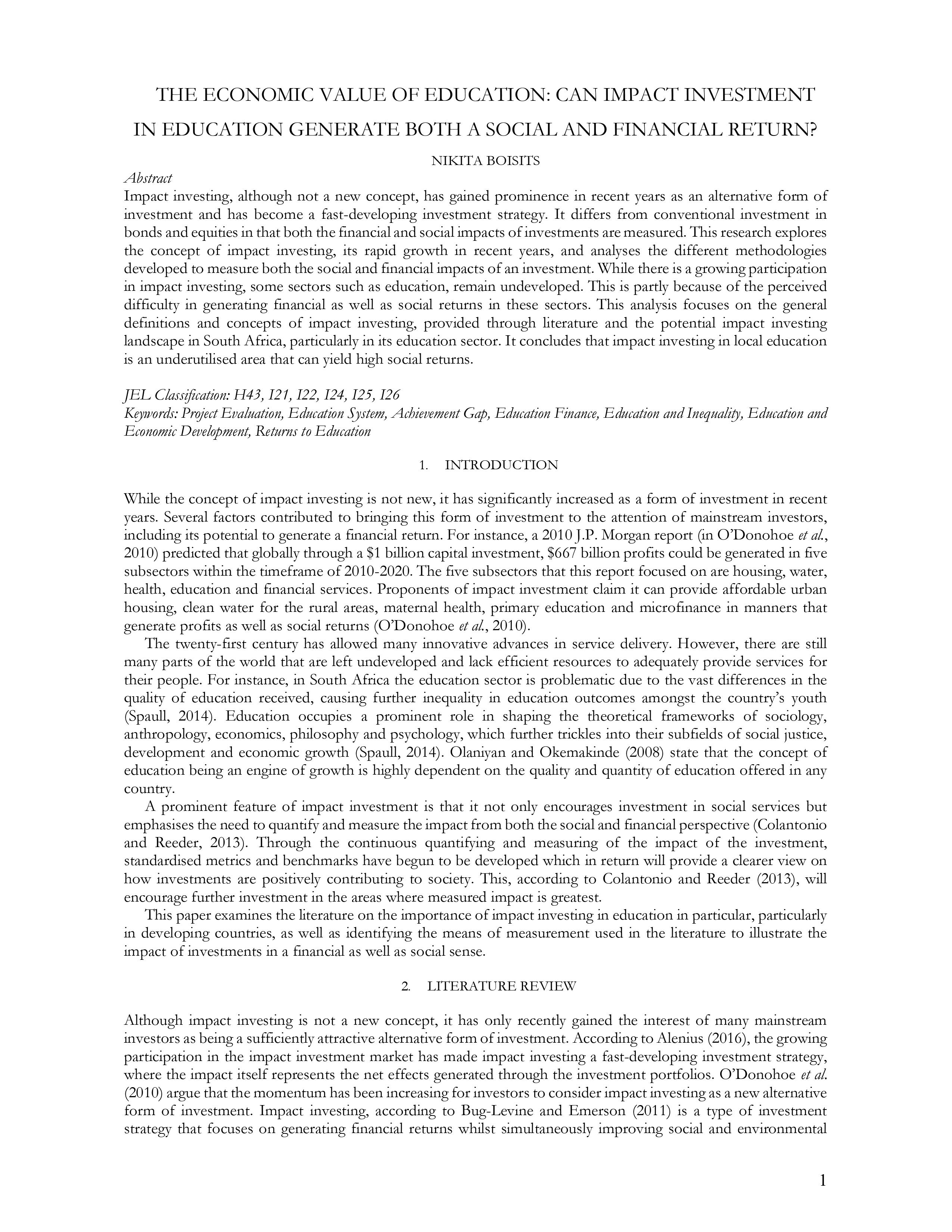
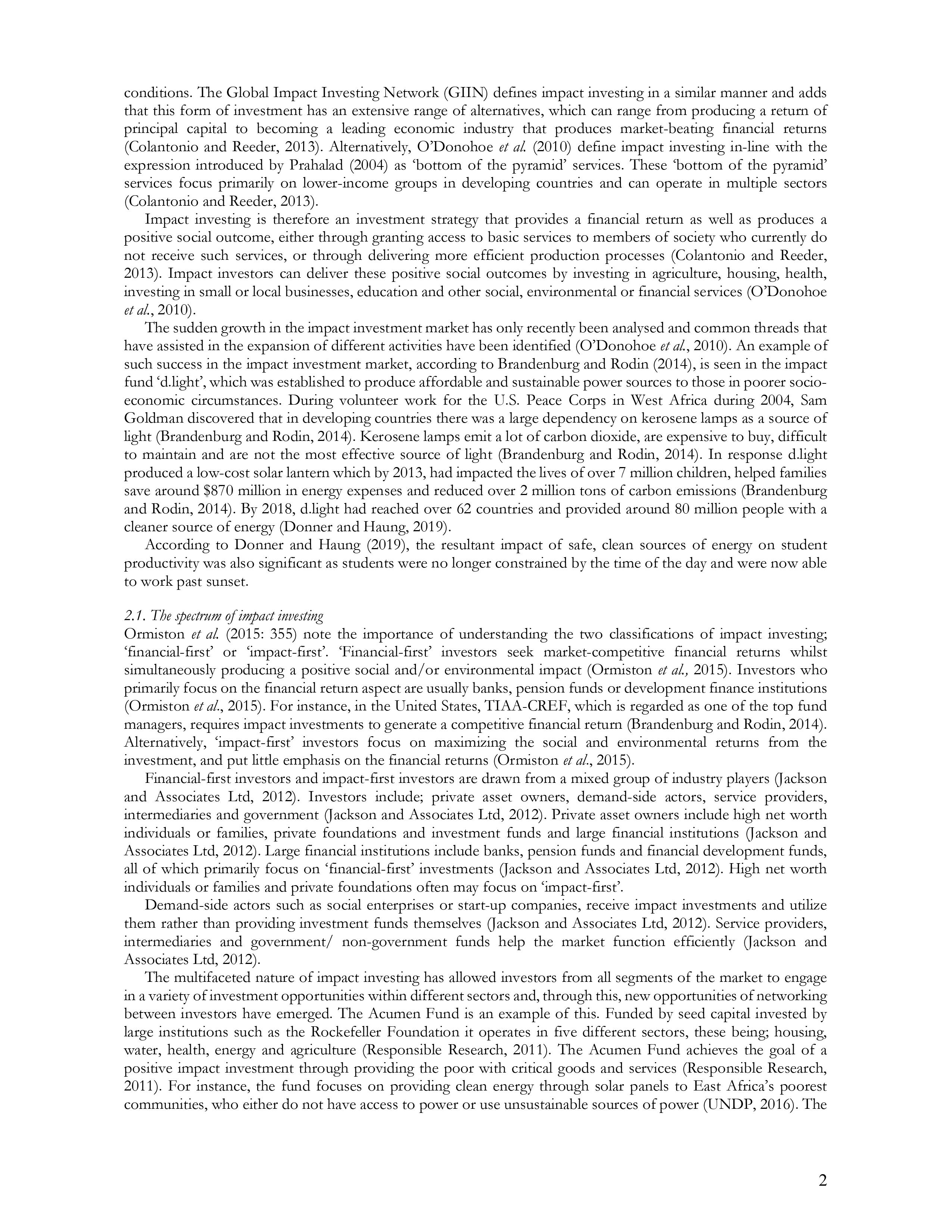
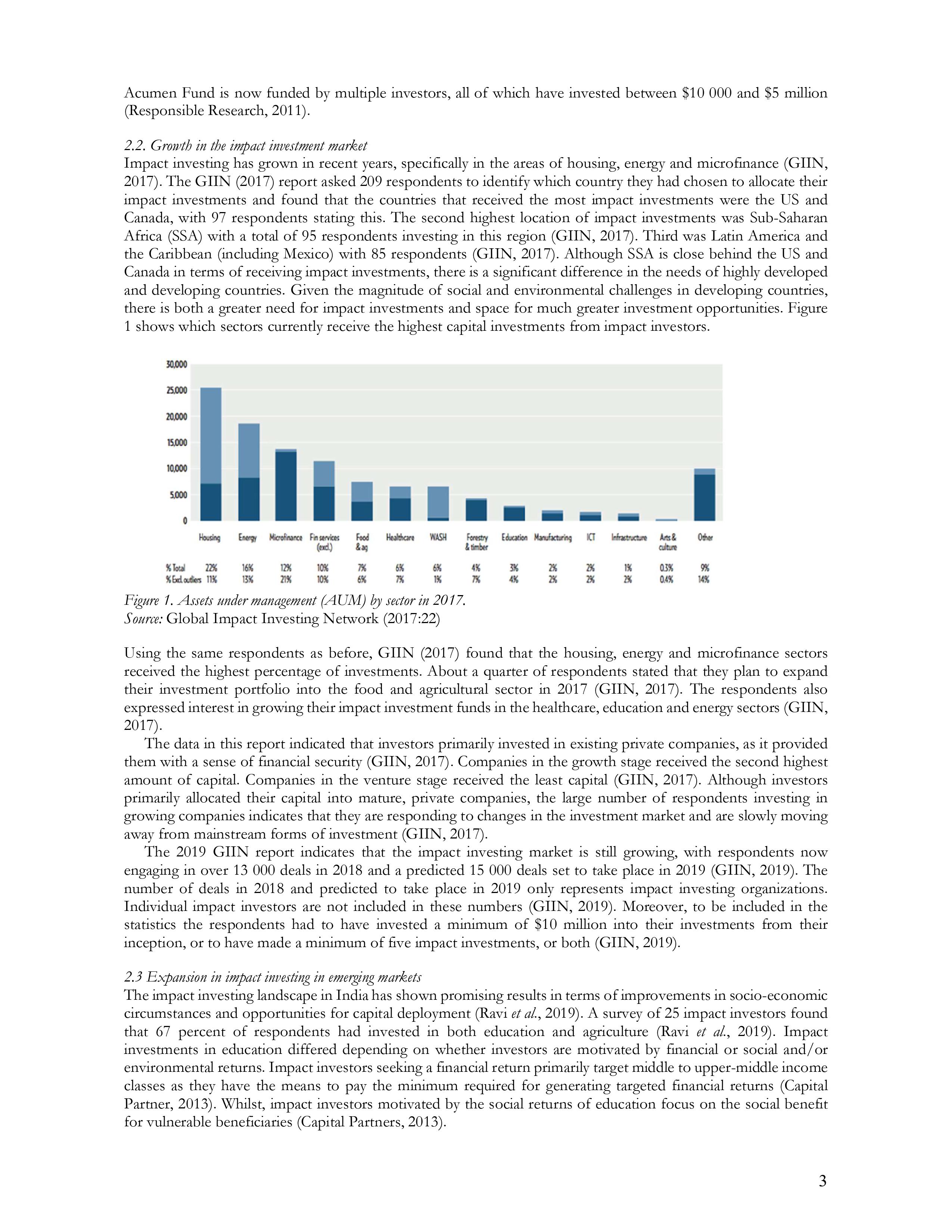
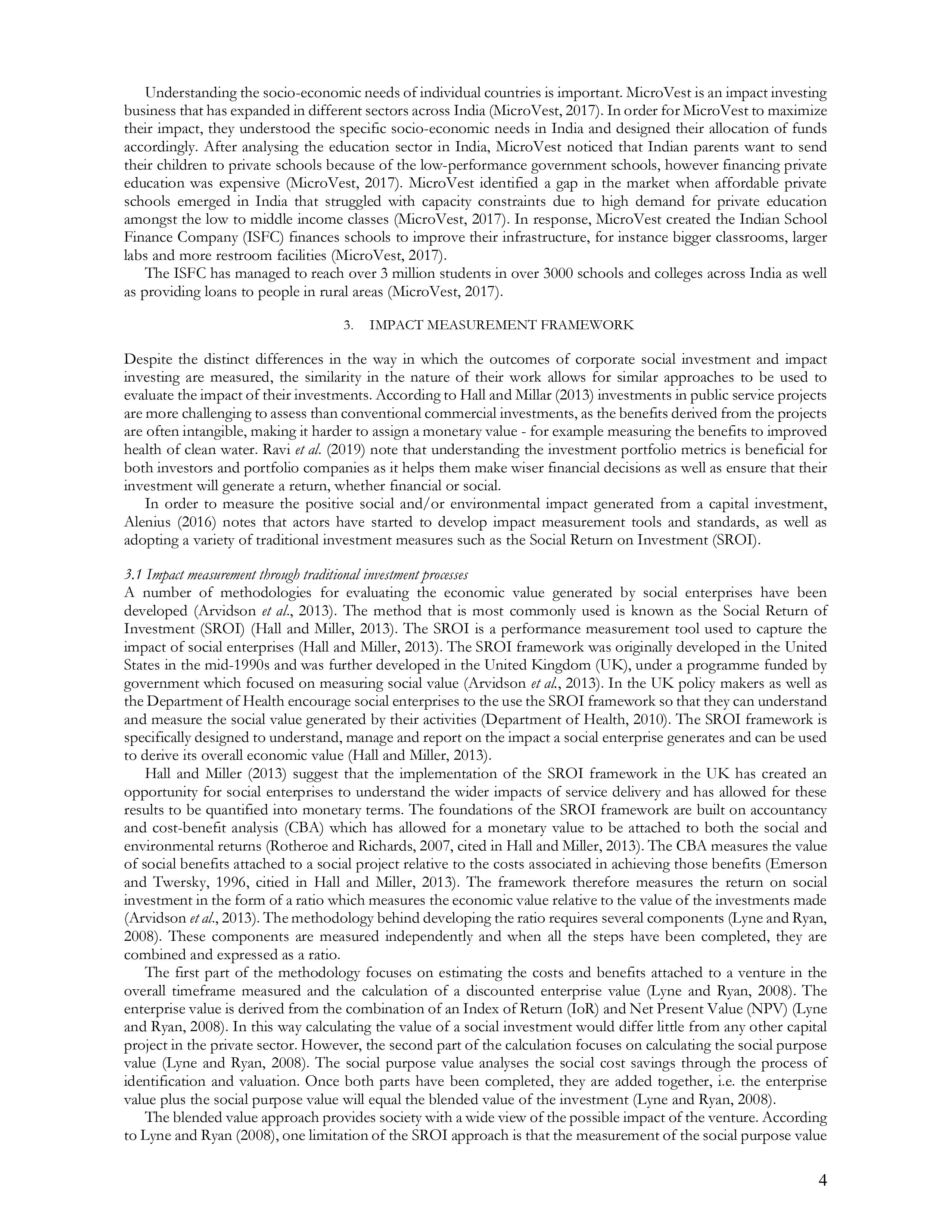
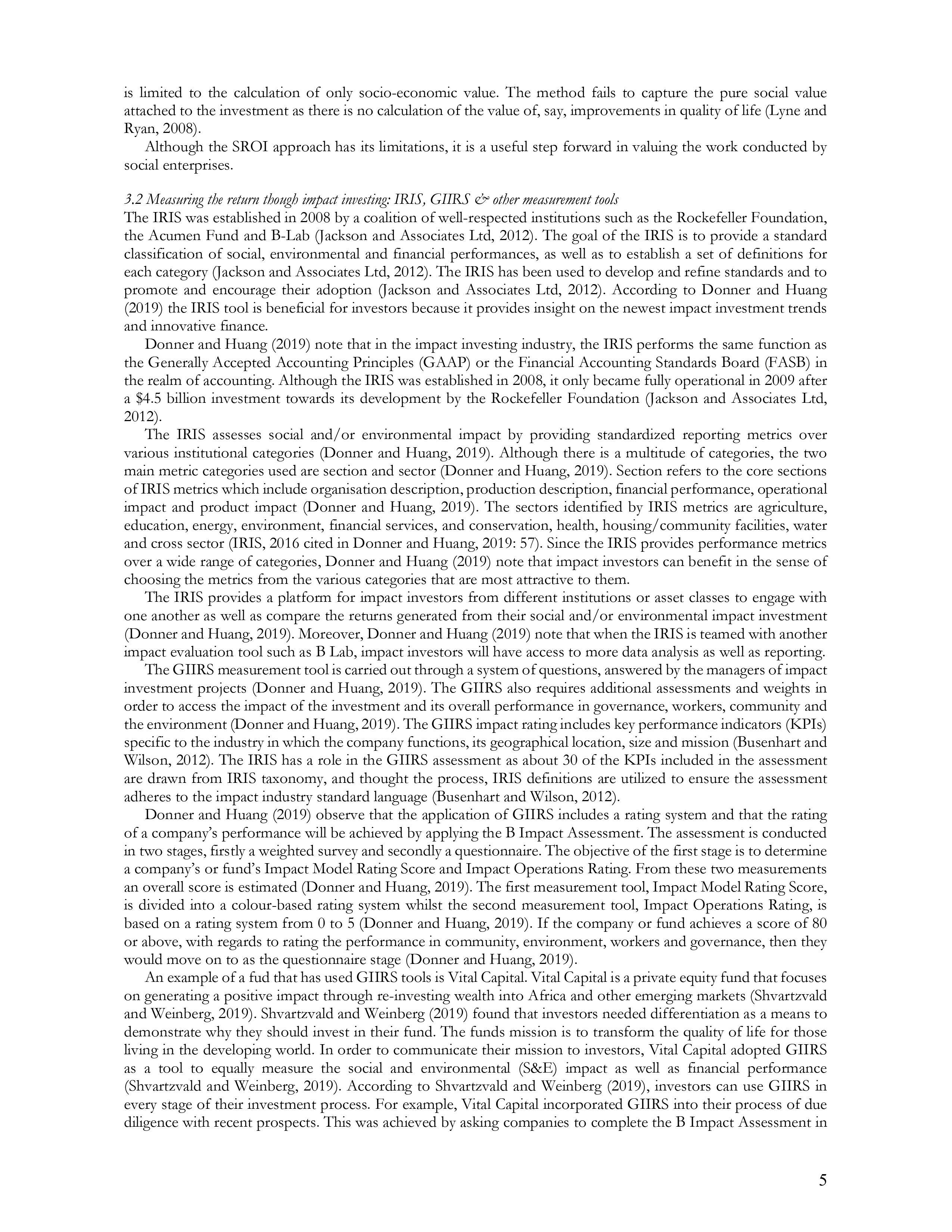
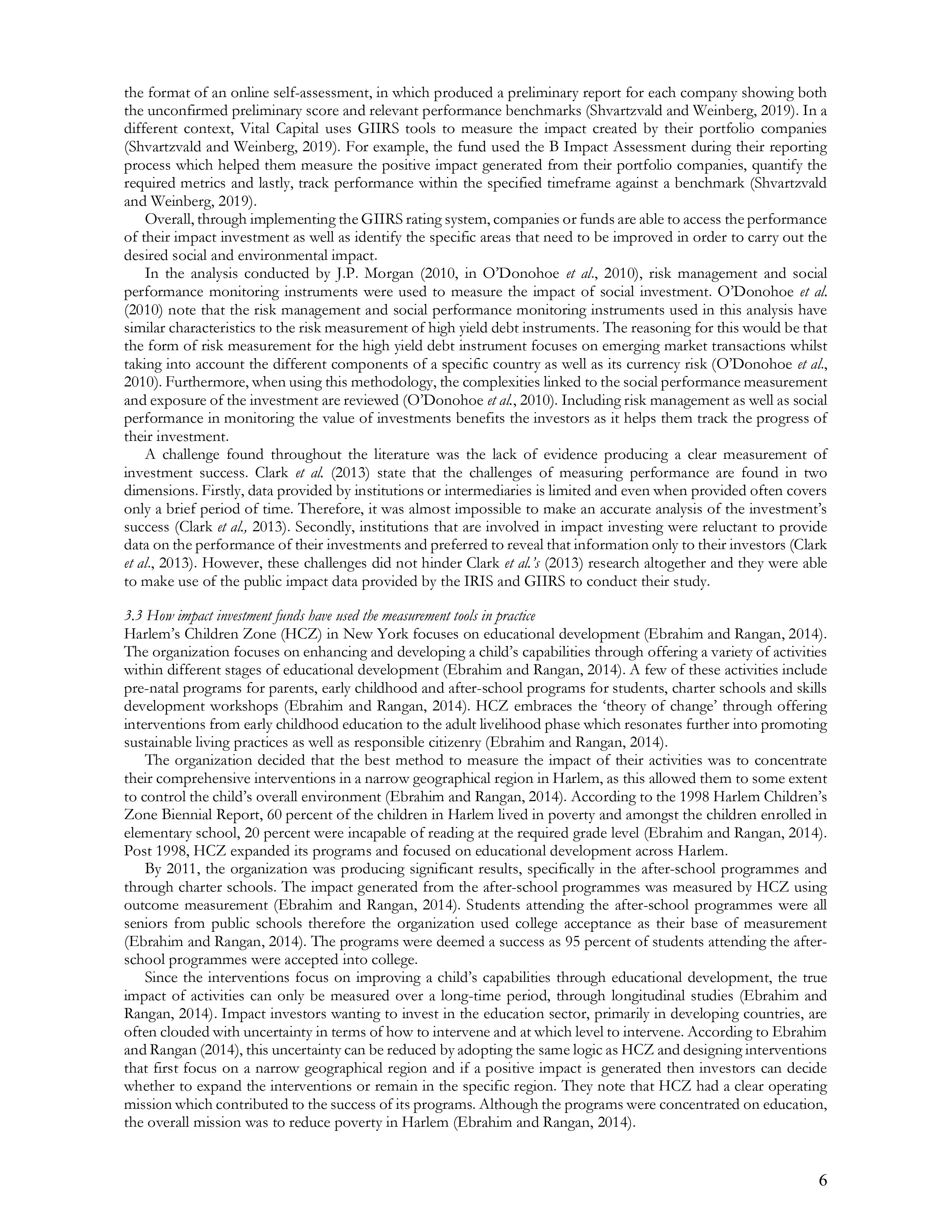
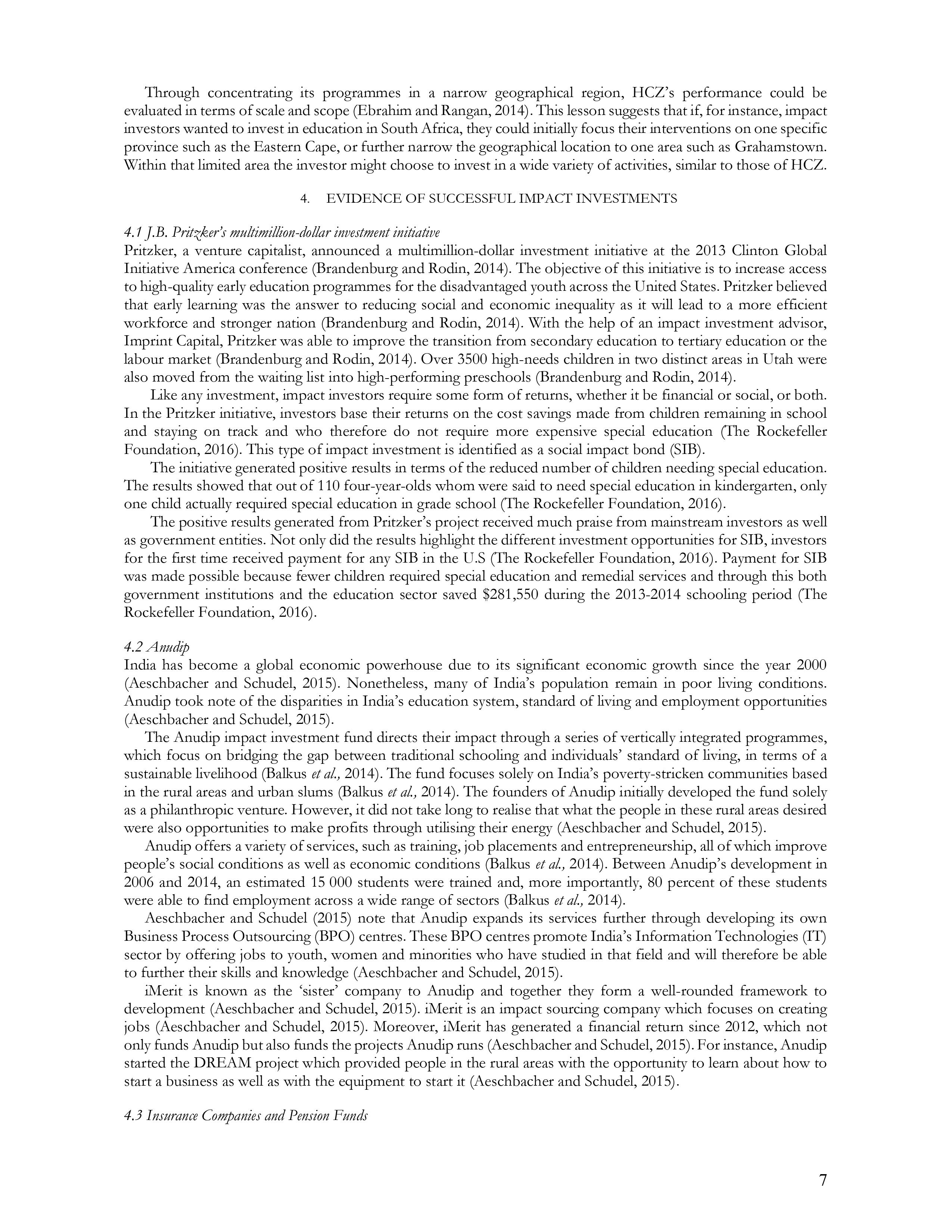


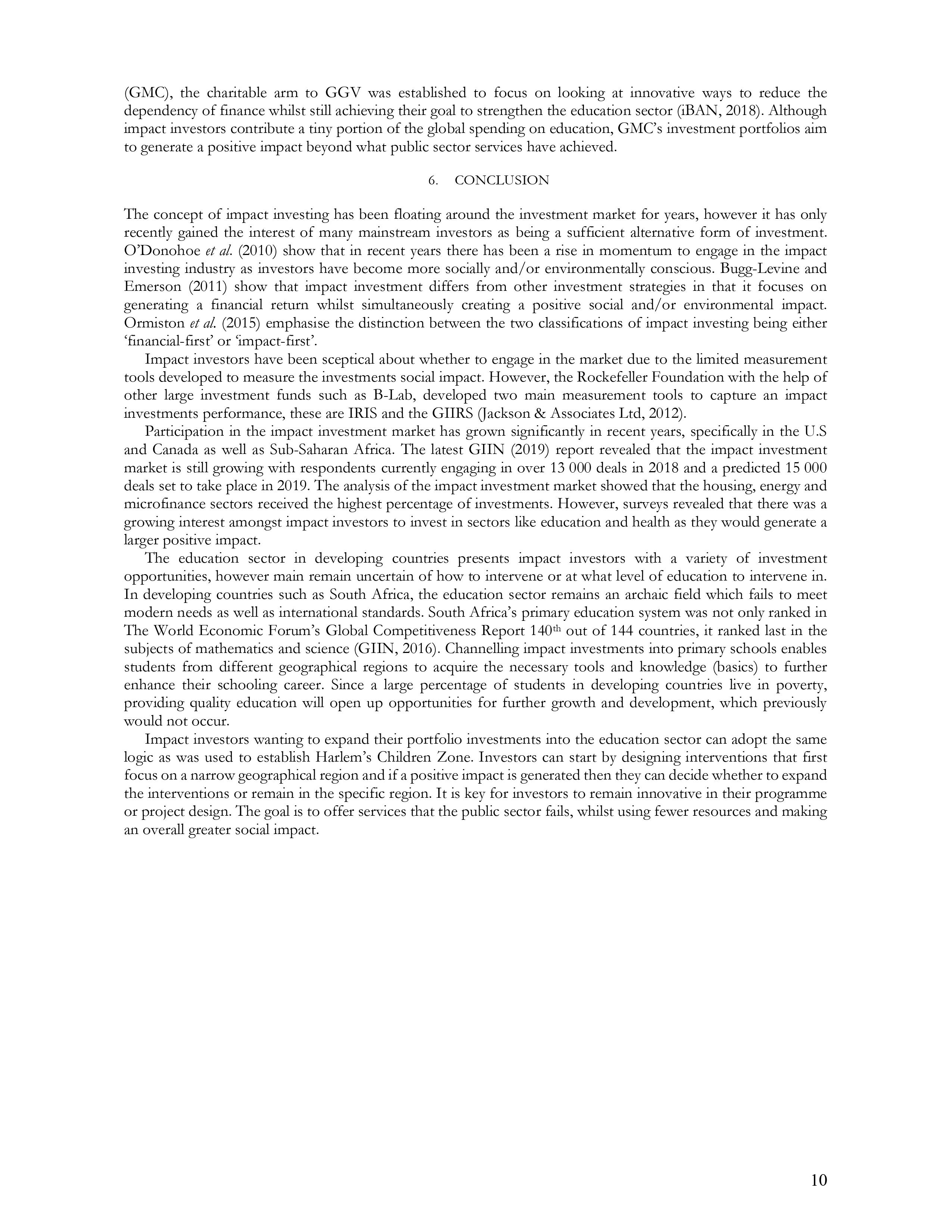
![7. REFERENCE LIST
AESCHBACHER, 'T. and SCHUDEL, C.B.M. (2015). 2015 Collection of Course Papers from: Impact investing-
Redefining the meaning of return.
ALENIUS, R.A. (2016). Measurement Process in Impact Investing: State of Practice in urope. Unpublished Master’s thesis.
Massachusetts: Harvard Extension School, Harvard University.
ARDOUREL, F. (2018). Impact Investing: What it 1s & How does it work. Frank Ardourel. [Online]. Available:
https://franckardourcl.com/impact-investing/ 13 October.
ARVIDSON, M,, LYON, I, MCKAY, S. and MORO, D. (2013). Valuing the social? The nature and controversies
of measuring social return on investment (SROT). Voluntary Sector Revie. 4(1) 3:18.
BALKUS, J., LUQUE, M., and VAN ALFEN, I. (2014). The intersection of impact investing and international
development: A Primer. AMP. 3-11.
BRANDENBURG, M. and RODIN; |. (2014). The Power of Impact Investing: Putting markets to work. for profit and global
good. 1.ondon: Wharton Digital Press.
BUGG-LEVINE, A. and EMERSON; J. (2011). Impacting Investing: Transforming how we make money whilst
making a difference. Innovations: Technology, Governance, Globalization. 6(3): 9-18.
CAPITAL PARTNERS, DD. (2013). Impact investing in education: An overview of the current landscape. LSP
Working Paper Series, 2013 No. 59.
CHARLTON, K., DONALD, M.S., ORMISTON, |. and SEYMOUR, R.G. (2015). Overcoming the Challenges
of Impact Investing: Insights from Leading Investors. Journal of Social 1ntrepreneurship. 6(3): 352-378.
CLARK, C., EMERSON, J. and THORNLLEY, B. (2013). IMPACT INVESTING 2.0: The Way Forward. Global
Impact Investing Network. [Online]. Available: https://thegiin.org/research/publication/impact-investing-2-0-
the-way-forward 8 May.
11](https://contents.bebee.com/users/id/ai1sL6421d198001be/post/ROLJm642eae9d91806/ZlpOw.jpg)
![COLANTONIO, A. and REEDER, N. (2013). Measuring impact and non-financial returns in impact investing: a critical
overview of concepts and practice. Unpublished report. London: Department of Feonomics and Political Science, The
I.ondon School of Economic and Political Science.
Department of Health. (2010). Measuring Social Value- How Vive Social interprises Did It. 1.ondon: The Stationary
Office.
DONNER, B. and HUANG, C.C. (2019). The Power of Impact Investing. Unpublished report for the Human Research
Centre. Rutgers University.
EBRAHIM, A, and RANGAN;, V.K. (2014). What Impact? A framework measuring the scale and scope of social
performance. California Management Review. 56 (3): 118-141.
GLOBAL IMPACT INVESTING NETWORK. (20106). The Landscape for Impact Investing in Southern Africa. Global
Impact Investing Network.
GLOBAL IMPACT INVESTING NETWORK. (2017). 2017 Annual Impact Investor Survey. Global Impact
Investing Network.
GLOBAL IMPACT INVESTING NETWORK. (2019). 2019 Annual Impact Investor Survey. Global Impact
Investing Network.
GREENSTEIN, |. (2018). Education 1s the ultimate impact investment. Thrive Global. [Online]. Available:
https://thriveglobal.com/stories/education-is-the-ultimate-impact-investment/ 9 September.
HALL, K. and MILLAR, R. (2013). Social return on investment (SROT) and performance measurement. Public
Management Review. 15 (6): 924-939.
INCLUSIVE BUSINESS ACTTON NETWORK. (2018). Impact Investing in Education in Developing
Countries. 1IBAN. [Online]. Available: https://www.inclusivebusiness.net/ib-voices/impact-investment-
education-developing-countries 11 October.
JACKSON, ET. and HARI, K. (2012). Accelerating Impact: Achievements, challenges and what's next in building the impact
wmvesting industry. New York: The Rockefeller Foundation.
JACK, A. (2019). Impact investors learn value of African education sector. Financial Times. [Online]. Available:
https://www.ft.com/content/40735046-82£6-11¢9-a7£0-77d3101896¢c 2 October.
LYNE, I. and RYAN, P.W. (2008). Social enterprise and the measurement of social value: Methodological issues
with the calculation and application of the social return on investment. Education, Knowledge > 1iconomy. 2 (3): 233-
237.
MICROVEST. (2017). Social Impact Report 2018. Wisconsin, USA: MicroVest.
O’DONOHOLE, N., LEIJONHUEFVUD, C. and SALTUK, Y. (2010). Impact Investment: An emerging asset
class. J.P. Morgan Social Finance Research Report, New York.
OLANIYAN, D.A. and OKEMAKINDE, T. (2008). Human Capital Theory: Implications for Educational
Development. Pakistan Journal of Social Sciences. 5 (5): 479-483.
RAVI, S, WRIGHT, E. G., SHARMA, P. and JONES, 1.B. (2019). The Promise of Impact Investing in India.
Brookings India Research Paper No. 072019.
RESPONSIBLE RESEARCH. (2011). Issues for responsible investors: Impact Investing in Emerging Markets:
Responsible Research.
THE ROCKEFELLER FOUNDATION. (20106). Innovation in Social Finance. Unpublished report for the
Stanford Graduate School of Business. Stanford University.
SHVARTZVALD, R. and WEINBERG, FE. (2019). Using B Analytics Across the Investment Cycle. B Analytics.
[Online]. Available: https://b-analytics.net/customers/case-studies /using-b-analytics-across-investment-cyele 13
October.
SPAULL, N. (2013). South Africa’s Education Crisis: The quality of education in South Africa 1994-2011. Centre
for Development 1nterprise.
SPAULL, N. 2014). Education Quality in South Africa and Sub-Saharan Africa: An Liconomue Approach. Stellenbosch:
Department of Feonomics, University of Stellenbosch.
UNDP. (2016). Impact Investment in Africa: Trends, Constraints and Opportunities. [Online] United Nations
Development Programme. Available: http://www.undp.org/ 12 September.](https://contents.bebee.com/users/id/ai1sL6421d198001be/post/ROLJm642eae9d91806/TEHft.jpg)

THE ECONOMIC VALUE OF EDUCATION: CAN IMPACT INVESTMENT IN EDUCATION GENERATE BOTH A SOCIAL AND FINANCIAL RETURN
Impact investing, although not a new concept, has gained prominence in recent years as an alternative form of investment and has become a fast-developing investment strategy. It differs from conventional investment in bonds and equities in that both
Diese Stellen könnten Sie interessieren
-
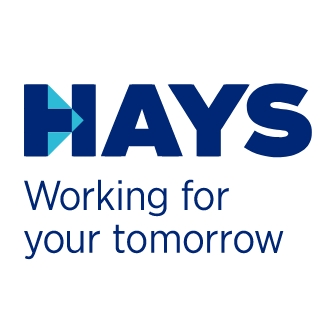
Laborhilfe / Produktionshilfe (m/w/d)
Gefunden in: beBee S2 AT - vor 1 Woche
Hays Professional Solutions Penzberg, Österreich GanztagsHerstellung und Abfüllung von Lösungen nach stöchiometrischen Berechnungen und experimentelle Arbeiten (Wägen, Pipettieren, pH-Metern, Lyophilisationsanlage, Analysenautomaten wie Elecsys, u.a.) · Bestelltätigkeiten spezifisch dem Bedarf der Logistik, Gruppierung in den Kunden Sy ...
-

LKW-Fahrer (m/w/d)
Gefunden in: beBee S2 AT - vor 2 Tagen
Trenkwalder Personaldienste GmbH Ötztal Bahnhof, Österreich ArbeitnehmerüberlassungUnser Kunde ist ein moderner und leistungsfähiger Energie- und Dienstleistungskonzern in Ötztal Bahnhof und wir suchen ab sofort Sie als LKW-Fahrer (m/w/d). · Ihre Aufgaben · Zu Ihrem umfassenden Tätigkeitsfeld gehört das Führen des LKWs nach eingeteilten Touren · Sie sind zustän ...
-
Samstagszusteller
Gefunden in: Talent AT C2 - vor 1 Woche
Österreichische Post AG Horn, Österreich NebenberuflichBerufsfeld: · Logistik/Zustellung Das sind wir und das bewegt uns · Wir sind ein modernes Logistikunternehmen mit hochtechnisierter Infrastruktur und vielen digitalen Angeboten und Services. Wir befördern Briefe, Werbesendungen und Pakete, bieten analoge und digitale Werbung, ...
Sie haben keine Gruppen, die auf Ihre Suche passen

Kommentare